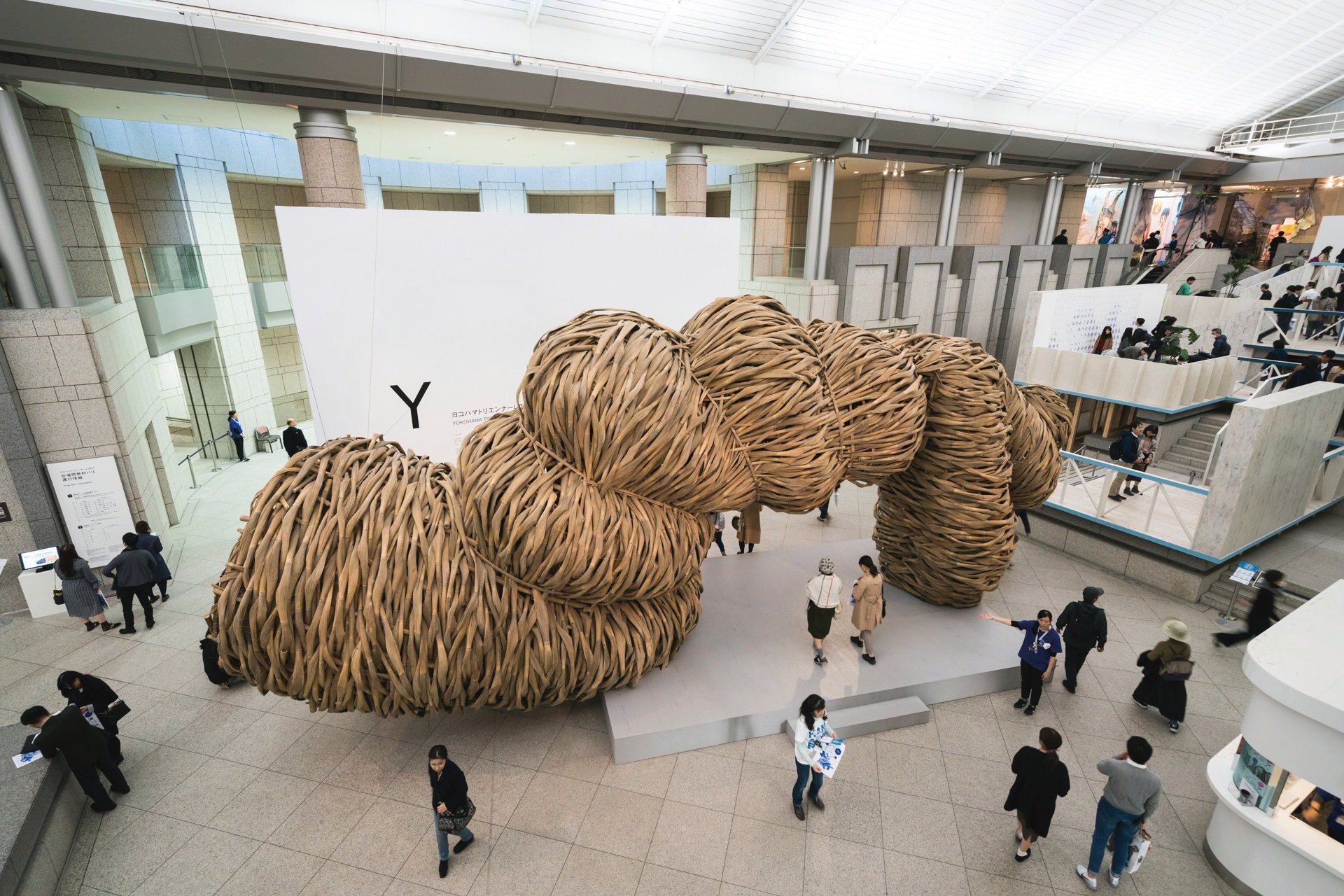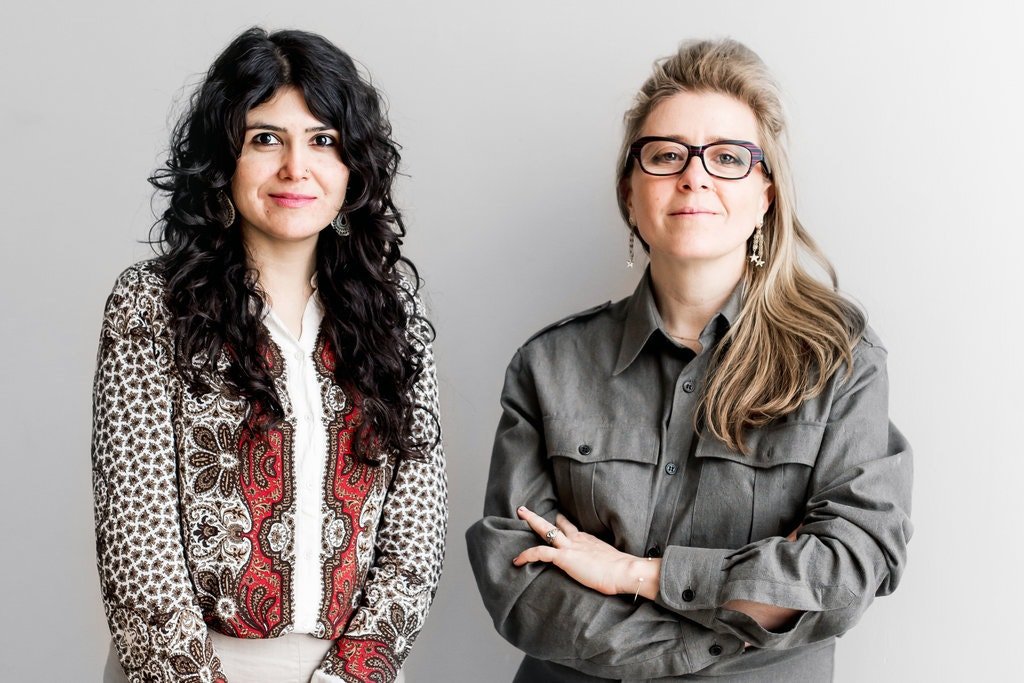Art Biennials Were Testing Grounds. Now They Are Being Tested

Written by Siddhartha Mitter and published originally by The New York Times 1 May 2020.
The Prospect New Orleans art triennial in October has been postponed to next year. So has the Liverpool Biennial. São Paulo’s Bienal is delayed by at least a month. The Dakar Biennale has yet to set new dates. Front International, in Cleveland, has decided to skip 2021 altogether and return in 2022.
The coronavirus crisis has thrown into question the post-pandemic future of contemporary art biennials (and their cousins, triennials and quadrennials). Of an estimated such 43 exhibitions in 2020, some 20 have been postponed so far, according to a tally by the Biennial Foundation, with further changes near certain. The Biennale of Sydney opened in March for a three-month run — and had to close after 10 days.
“The biennial is a testing ground,” said Defne Ayas, co-artistic director, with Natasha Ginwala, of the Gwangju Biennale, in South Korea, which is still preparing to open in September.But the testing ground is itself being tested.
The idea of the international art exhibition has flourished at least since the Venice Biennale was founded in 1895, but they have proliferated in the last two decades as the contemporary art field has gone global. Now their fate is linked to the big question of how culture industries, and cultural habits, will emerge from the pandemic. The crisis also threatens art fairs, which are driven by the market, itself facing great uncertainty, and the global ecosystem of workshops and residencies that have become vital to the careers of artists.
But the premise of a biennial is distinctly cosmopolitan and civic. The bet is that mingling artists, out-of-town visitors, and the local public — big biennials often draw a half-million attendees — around a theme that seeks to interpret the world, will benefit everyone involved, while helping cities boost their cultural profiles.
Some biennials are postponing for up to a year. Others hope to proceed on schedule at least for the local audience. And still more are commissioning new projects expressly designed for online.
The lurking question is whether the biennial model still makes sense in a post-pandemic world.
What happens to an art show may not be top priority now in places battered by the coronavirus — not least New Orleans, where the disease has killed hundreds, including standard-bearers of the city’s culture — or even in the aftermath.

“We’re going through something we have never seen,” said Manuela Moscoso, the curator of this year’s Liverpool Biennial, working with its director Fatos Ustek. “Coronavirus arrived in several waves: first the virus, and then all the different realizations of what it means.”
A few weeks ago, as travel began to shut down, I spoke with the curators and artistic directors of seven upcoming biennials on five continents to hear the implications of the pandemic, and the stakes for their craft.
All had their highly itinerant lives abruptly paused. Ms. Ayas, for instance, is Turkish and lives in Berlin; Ms. Moscoso is Ecuadorean, and was living in Mexico City before moving to Liverpool with her family for this project. But when I reached them, all were in some form of lockdown.
“There’s been a few weeks of shell shock,” said Bonaventure Soh Bejeng Ndikung, the artistic director for the Sonsbeek exhibition in the Netherlands, who is Cameroonian and based in Berlin.
But with their events in the balance — involving artists, public and private partners in host cities, and endless logistics — they did not have the luxury of waiting out the crisis.
One approach is to forge ahead. The Yokohama municipal authorities are eager not to postpone the Triennale’s opening on July 3, though the region is currently under a state of emergency. The 2011 edition, soon after the Fukushima nuclear disaster, was well attended, playing a possibly therapeutic role.
“They feel that when people have been through an intense experience, where anxieties around mortality and what life means become foregrounded, people turn to art,” said Monica Narula of Raqs Media Collective, the Delhi-based group that is curating this year’s program.

The exhibition as planned is typically large and diverse, with 65 participants, including luminaries like Nick Cave or Korakrit Arunanondchai, emerging stars like Farah Al Qasimi or Lebohang Kganye, as well as 13 artists from Japan. Its title is “Afterglow,” a reference to white noise, radiation, and how to live amid destruction and toxicity.
Ms. Narula and her colleagues, Jeebesh Bagchi and Shuddhabrata Sengupta, face the odd prospect of directing the process remotely, and of arriving late to their own exhibition — as will, surely, many artworks and the artists. The idea is that the show will build over the course of the summer, and be complete by the time it is scheduled to close — in October.
It could work, Ms. Narula said. “This is what us and the world will discover together.”
The Bienal de São Paulo is also proceeding, with only a one-month delay; it is now scheduled to open in October, said Jacopo Crivelli Visconti, its curator, who is Italian and based in the Brazilian metropolis.

Holding the event was a strong symbol, he said, to counteract the anti-culture stance of President Jair Bolsonaro, and only more so to help heal after the pandemic.
The Bienal draws a large local audience, and the hope was to deliver for them, with exhibitions in 24 venues across the sprawling city that the art-world professionals — if they can jet in for opening week — would be unlikely to absorb in full.
Many artists in the main group show will have solo shows as well. And some exhibitions will include historical artists, not just contemporary ones, to create reference points. “That may be an entrance door for a large audience,” Mr. Visconti said.
São Paulo is far ahead of other Brazilian states in coronavirus cases, and Mr. Visconti acknowledged that prospects for the Bienal were fluid. The program would be partly improvised. “We’re approaching the whole exhibition as a rehearsal.”
Rather than embrace the uncertainty, other biennials are choosing the clarity of postponement. But with it comes the responsibility of making a show that is not only visitable, but relevant after a pandemic, and possibly in a depression.
“After what we’re experiencing, you can’t come with an exhibition that just tries to forget it all,” said El Hadji Malick Ndiaye, the artistic director of the Dakar Biennale, which was supposed to open in late May. “But it doesn’t make sense to do an exhibition that’s solely about the pandemic either.”


In New Orleans, the Prospect triennial is working with other groups to shore up resources and protect arts jobs threatened by the crisis, said Nick Stillman, its director.
Eight of the 51 artists and collectives in the show are based in New Orleans, and others are preparing projects about the city. Naima Keith and Diana Nawi, the co-curators, said they had invited all the artists to rethink their projects, if they so choose.
It was too soon, they said, to know how the final program would reflect the new situation — both in New Orleans and the world at large.
“Next year is a time of listening and working with people on the ground,” Ms. Nawi said. “We take our lead from them. New Orleans is a city that has survived a lot.”
“One benefit of postponing is that it gives us time,” Ms. Keith said. “Time to understand what it means to be to be sheltered, to have social distance, and how society is reacting.”
Yet changes in how biennials are staged were already brewing. The pandemic may have an accelerating effect, as shows move away from the conventional format of a glitzy opening week followed by slower-paced programming around town.

For Sonsbeek, which has occurred since 1949 at irregular intervals in Arnhem’s city park but is now on a quadrennial schedule, Mr. Ndikung planned a decentralized, four-year program — a “continued public process” with the main group show running the whole time, plus satellite events in other countries and a rich online component emphasizing radio.
The show’s title is “Force Times Distance” — the scientific formula for work, inviting projects on labor, working conditions and employment. In the year until the physical exhibition’s delayed opening, Mr. Ndikung plans audio projects on themes the pandemic has elevated: work from home, care work, what work is essential. He is partnering with radio stations in different countries, and hopes to broadcast from spaces like barbershops.
The approach is both more digital — an online film program will be beefed up as well — and more local, with small-scale activities in multiple cities, including Arnhem, in collaboration with community groups and bookstores.
Still, Mr. Ndikung said, an international gathering around the main exhibition was vital. “We are planning as if this thing will end one day,” he said of the crisis.
Yet even if a vaccine ends Covid-19 contagion, there is a sense that habits are changed for good.
“We all knew that we were supposed to travel less,” said Mr. Visconti, in São Paulo. “We knew there was a need to be more local — not just in art but in everything.”

But the idea of insular art events, where the international exchanges only happen online, contradicts the cosmopolitan, cross-fertilizing impulse of biennials.
“Foreigners have a function to connect locals to locals,” said Ms. Ayas, noting that some Korean artists she and Ms. Ginwala selected for Gwangju are little known in their own country.
“It would be strange to only access different contexts, cultures, and ways of being through the screen,” said Ms. Ustek, the Liverpool director. “I still believe in the physicality of encounter.”
Ultimately, Mr. Ndikung, for one, is fine with discarding biennials should they no longer fit the purpose.
“I don’t care,” he said. “The point is, can people still do art? Can people express themselves? The biennial is just the container. If it’s not the biennial it will be something else.”
Correction: May 1, 2020
An earlier version of this article misstated the titles of Natasha Ginwala and Defne Ayas at the Gwangju Biennial. They are co-artistic directors, not co-curators. The error was repeated in a picture caption.
A version of this article appears in print on May 3, 2020, Section AR, Page 15 of the New York edition with the headline: Testing Grounds Are Now Being Tested .